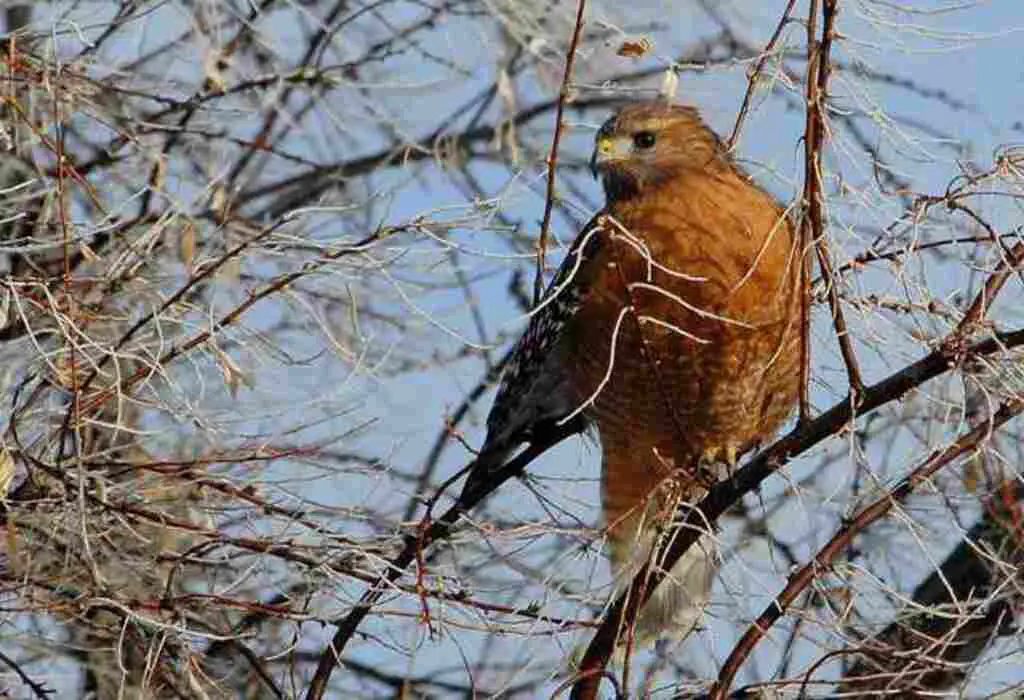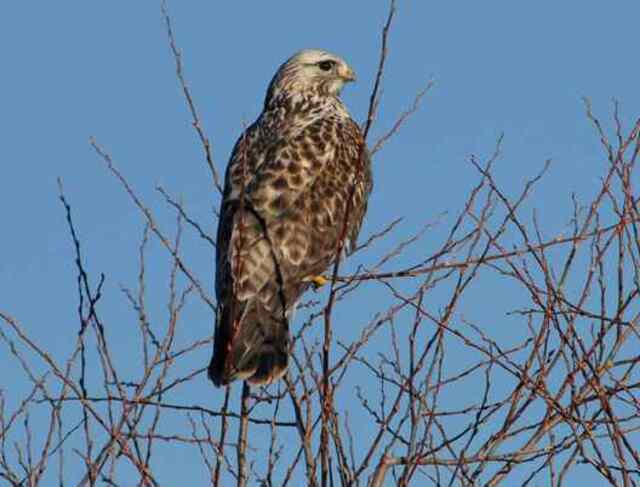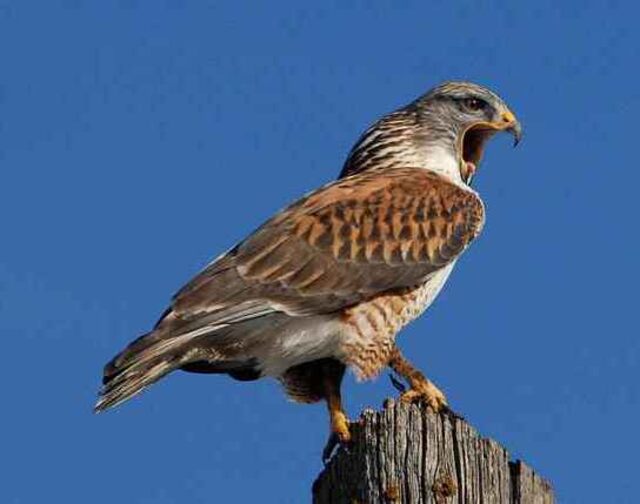As humans, we pride ourselves on being at the top of the food chain. We consume a variety of foods without fear of being hunted down and devoured by other creatures. However, the same cannot be said for other animals, including birds.
Hawks, for instance, are known for their predatory nature, but do they feast on every bird that crosses their path? Specifically, do hawks eat cardinals?
The answer is not as simple as a yes or no. Hawks are known to prey on a variety of birds, including cardinals. However, this does not mean that every hawk will hunt down a cardinal.
There are a variety of factors that come into play when it comes to hawk prey selection, such as the size and behavior of the bird, as well as the habitat in which both predator and prey live.
In this article, we will explore the relationship between hawks and cardinals, the factors that influence hawk prey selection, and the adaptations that cardinals have developed to avoid being hunted down.
By the end of this article, you will have a better understanding of the complex relationship between these two bird species and the ways in which they coexist in nature.
Table of Contents
- 1 Key Takeaways
- 2 Overview of Hawks and Cardinals
- 3 Hawk Predation on Birds
- 4 Cardinal Characteristics
- 5 Hawk Species that Prey on Cardinals
- 6 Hawk-Caridinal Interactions
- 7 Factors that Influence Hawk Prey Selection
- 8 Cardinal Adaptations to Avoid Predation
- 9 Human Impact on Hawk-Cardinal Relationships
- 10 Promoting Coexistence between Hawks and Cardinals
- 11 Frequently Asked Questions
- 12 Conclusion
- 13 Author
Key Takeaways
- Hawks are predatory birds that prey on a variety of birds, including cardinals.
- Hawk predation can significantly impact cardinal populations, leading to decreased abundance.
- Cardinal populations adapt to the presence of hawks by altering behavior and nesting habits.
- Understanding the species of hawks that prey on cardinals is important for managing and conserving populations.
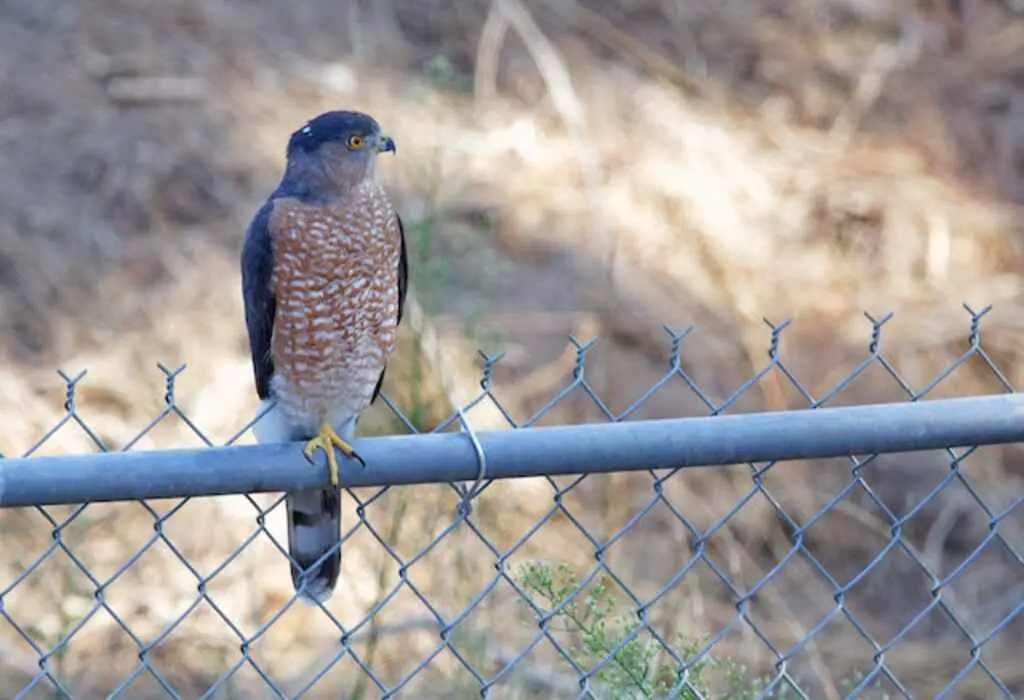
Overview of Hawks and Cardinals
Hawks and cardinals are two species of birds that have distinct physical and behavioral characteristics, making them fascinating subjects for ornithological study.
Hawks are known for their sharp talons, keen eyesight, and impressive speed, while cardinals are recognized for their bright red plumage and melodic songs.
Hawks are migratory birds that travel long distances to find food and breeding grounds, whereas cardinals tend to stay in one area year-round.
Cardinals are monogamous and use specific mating rituals to attract a mate.
Despite their differences, both species play important roles in their respective ecosystems. However, the question remains: do hawks eat cardinals?
This is a topic of interest for many bird enthusiasts, and it is one that we will explore in the subsequent section about hawk predation on birds.
Hawk Predation on Birds
Hawks are known for their predatory behavior towards birds, which makes them a subject of interest for biologists. In this subtopic, we will discuss the hunting techniques used by hawks to catch their prey as well as the variations in their diet.
By examining these aspects, we can gain a better understanding of the ecological role of hawks and how they impact the bird community.
Through data-driven analysis, we can also explore the factors that influence hawk predation on birds and the potential implications for avian populations.
Hunting Techniques
Despite the apparent elegance and grace of their hunting techniques, some birds of prey have been known to employ rather brutal methods to catch their prey.
Hawks, for instance, use a combination of stealth, speed, and surprise to capture their prey. They are known to ambush their prey from a perch or dive down from above with incredible speed, often reaching speeds of up to 120 miles per hour.
To avoid detection, hawks also use camouflage techniques, blending in with their surroundings to remain hidden from their prey. Additionally, they exhibit territorial behavior, often hunting in a specific area to ensure a steady supply of prey.
However, despite their impressive hunting skills, hawks are not picky eaters and will consume a wide range of prey, including small mammals, reptiles, insects, and even other birds.
With this in mind, it is worth exploring the diet variations of hawks and how they impact their hunting techniques.
Diet Variations
Understanding the dietary preferences of birds of prey is crucial in comprehending the nuances of their hunting techniques.
Hawks, being birds of prey, have a wide range of dietary preferences and tend to occupy a specific ecological niche. Their diet can vary based on their species, location and time of the year.
While some hawks prefer a diet of small mammals, others prefer a diet of birds and reptiles.
For instance, some species of hawks, such as the Cooper’s hawk, feed primarily on birds, while sparrowhawks have been known to feed on insects and small mammals.
The red-tailed hawk, on the other hand, has a more varied diet, including small mammals, birds, reptiles, and even fish.
Understanding the nuances of a hawk’s dietary preferences can help us better understand their hunting techniques and how they interact with their environment.
Moving on to the subsequent section about cardinal characteristics, it is important to understand the dietary preferences of hawks in order to answer the question, ‘do hawks eat cardinals?’
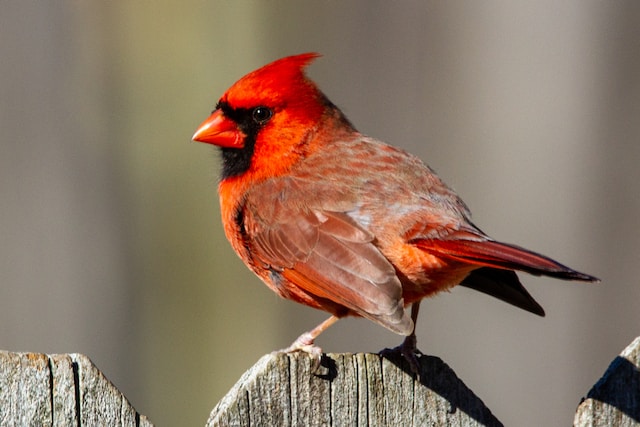
Cardinal Characteristics
Cardinals are small, brightly colored passerine birds commonly found in North and South America.
They are known for their distinctive physical appearance, with males sporting bright red plumage and a distinctive crest on their head, while females have more muted brownish-red feathers.
Cardinals typically inhabit forests, woodlands, and gardens, and are known for their singing and territorial behavior.
Physical Appearance
Physical features of hawks include sharp talons, hooked beaks, and piercing eyes that aid in their hunting abilities.
These birds of prey have a distinct appearance, with a streamlined body and broad wings that allow them to soar effortlessly through the air.
Hawks also have excellent vision, with eyesight up to eight times sharper than that of humans. Their hooked beaks are designed for tearing flesh, while sharp talons enable them to grasp their prey firmly.
Hawks also have the ability to camouflage themselves, with some species having feather patterns that blend in with their surroundings.
This physical difference allows them to remain hidden from both predators and prey.
As hunters, hawks are known for their agility and speed, with some species capable of reaching speeds of up to 150 mph during a dive.
These birds are fascinating creatures with unique physical characteristics that enable them to survive in the wild.
Moving on to their habitat and behavior, hawks are highly adaptable and can be found in a variety of environments.
Habitat and Behavior
Habitat and behavior of hawks vary greatly depending on the species and their range. Hawks are known to have highly territorial behavior, with each species having a specific range that it defends against other hawks and predators.
The range of a hawk is determined by its habitat, which can vary greatly from species to species. Some hawks prefer open fields and grasslands, while others prefer dense forests and mountains.
In terms of behavior, hawks are known to be solitary birds, except during mating season when they form pairs.
The cardinal, on the other hand, is known for its habitat diversity, with different species of cardinals found in various regions of North, Central, and South America. Cardinals prefer habitats such as woodlands, gardens, and shrublands.
To add depth to the hook, a table showcasing the different habitats and ranges of various hawk species can be incorporated.
This data-driven approach can engage the audience and provide a scientific perspective.
With this understanding of the habits and habitats of hawks and cardinals, we can explore the next section, which focuses on hawk species that prey on cardinals.
Hawk Species that Prey on Cardinals
There are various species of hawks that are known to prey on small birds, such as the cardinal. The most common hawk species that prey on cardinals are the Cooper’s hawk and the sharp-shinned hawk, both of which are found throughout North America.
These hawks are known for their hunting behavior, which involves ambushing their prey from cover and chasing it through the trees.
The cardinal population dynamics are affected by this hawk behavior, as cardinals are a common prey item for these birds of prey.
Research has shown that hawk predation can have a significant impact on the cardinal population, with higher predation rates leading to decreased cardinal abundance.
Understanding the hawk species that prey on cardinals is important for managing and conserving these bird populations.
In the next section, we will explore the interactions between hawks and cardinals in more detail.
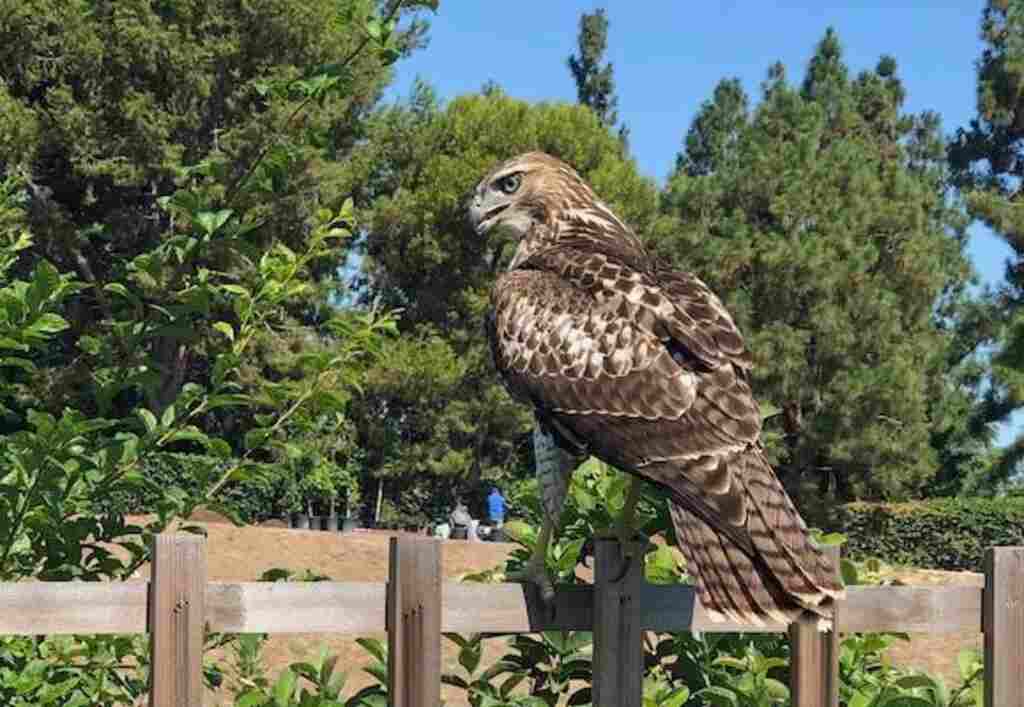
Hawk-Caridinal Interactions
Interactions between hawks and cardinals have been observed in various environments across North America, with these predatory birds often targeting cardinals as a common prey item.
Despite the fact that hawks are known to prey on cardinals, the two species have evolved to coexist in the same habitats.
Recent studies have shown that the population dynamics of both species are influenced by factors such as prey availability, habitat structure, and predation pressure.
While hawks may have a significant impact on cardinal populations, cardinals have also been shown to adapt to the presence of hawks by altering their behavior and nesting habits.
Overall, the coexistence of hawks and cardinals highlights the complex interactions between predator and prey, and underscores the importance of understanding the factors that influence hawk prey selection.
Factors that Influence Hawk Prey Selection
Understanding the various factors that influence prey selection by predatory birds such as hawks is crucial for effective conservation efforts and maintaining ecological balance.
Hawks are opportunistic predators and will prey on a wide variety of animals, including small birds like cardinals.
However, they do not choose their prey randomly and will select certain individuals based on a number of factors.
These factors include the prey’s size, behavior, and habitat.
Larger prey are often preferred as they provide more sustenance, while prey that exhibit erratic or conspicuous behavior are more likely to attract the attention of a hawk.
Habitat is also an important factor, as hawks will often select prey that are in areas where they are more vulnerable, such as open spaces or near the ground.
Additionally, factors such as weather and time of day can also impact prey selection.
By understanding these factors, conservationists can better predict areas where certain prey species are at risk and implement measures to protect them.
Furthermore, understanding these factors can also inform strategies for managing populations of both predator and prey species in a given ecosystem.
In the subsequent section, we will explore how cardinals have adapted to avoid predation by hawks and other predators.
Cardinal Adaptations to Avoid Predation
Cardinals have developed adaptations to avoid predation, including alarm calls and nesting strategies.
Alarm calls are vocalizations that cardinals use to communicate the presence of a predator to other birds in the area, allowing them to take evasive action.
Nesting strategies involve selecting locations and building structures that provide concealment and protection from predators.
These adaptations are important for the survival of cardinals in areas where they coexist with predators such as hawks.
Alarm Calls
Eavesdropping on alarm calls can provide valuable insights into predator-prey dynamics.
Cardinals, like many other bird species, employ alarm calls as an important form of communication to warn others of potential danger.
These calls are specific to the type of predator and can vary in intensity depending on the level of threat.
Here are some interesting facts about cardinal alarm calls that you may find intriguing:
- Cardinals have a complex system of alarm calls that can communicate not only the presence of danger but also its location and type.
- Studies have shown that other bird species can understand and respond appropriately to cardinal alarm calls, even if they have never encountered that type of predator before.
- Male and female cardinals have different alarm calls, with females having a shorter and higher-pitched call than males.
- Cardinal nestlings can also produce alarm calls, indicating that this form of communication is innate and not learned.
Understanding the importance of communication and the role of alarm calls in predator-prey dynamics is crucial for the survival of many bird species, including cardinals.
From here, we will explore how cardinals employ different nesting strategies to avoid predation.
Nesting Strategies
In the pursuit of avoiding predators, cardinal birds have developed a variety of nesting strategies that provide protection and concealment for their offspring.
These strategies range from building nests in dense shrubs, vines, and trees to constructing multiple nests to confuse predators.
Additionally, cardinals have been observed using alarm calls to warn other birds of potential danger and to distract predators away from their nests.
Research has shown that these nesting strategies have a significant impact on the birds’ nesting success, with concealed nests resulting in higher success rates compared to exposed nests.
However, as with any predator-prey relationship, hawks pose a threat to cardinals and their offspring.
Despite these risks, cardinals have evolved efficient strategies for survival, and understanding these mechanisms is crucial to the conservation of their populations.
Moving forward, it is important to consider the impact of human activities on the hawk-cardinal relationship and to implement measures that support the survival of these birds.
Human Impact on Hawk-Cardinal Relationships
The impact of human intervention on the relationship between hawks and cardinals has become a growing concern among researchers.
Conservation efforts have been implemented to promote coexistence between these two species, but human activities continue to pose a threat to their interactions.
Here are three examples of how human impact affects the relationship between hawks and cardinals:
1) Urbanization and habitat destruction have reduced the availability of suitable nesting sites for cardinals, making them more vulnerable to predation by hawks.
2) The use of pesticides and other chemicals in agriculture has led to a decline in the population of insects, which are essential food sources for cardinals and other birds. This has resulted in a decrease in the number of cardinals, which in turn affects the food supply for hawks.
3) The installation of bird feeders in residential areas has attracted cardinals and other birds, which in turn attracts hawks looking for prey.
While these activities may seem harmless, they can have unintended consequences that disrupt the natural balance between predator and prey.
To promote coexistence between hawks and cardinals, it is important to understand how human activities can impact their relationship and take measures to minimize these impacts.
Promoting Coexistence between Hawks and Cardinals
To facilitate the coexistence of hawks and cardinals, it is crucial to understand the ecological factors that affect their interactions and implement appropriate management strategies.
Tips for backyard birdwatchers include providing appropriate food and shelter for both species to reduce competition, and deterring predators like cats and squirrels.
Additionally, it is important to recognize the importance of biodiversity in ecosystems, including the role that hawks and cardinals play in maintaining a healthy balance.
By promoting coexistence between these avian species, we can help preserve the natural world and ensure the survival of diverse wildlife populations.
Frequently Asked Questions
What is the lifespan of a hawk?
The lifespan of a hawk varies depending on the species, with some living up to 25 years in the wild. Hawk behavior is influenced by breeding habits and migration patterns, which can impact their survival and longevity.
How do cardinals communicate with each other?
Cardinals communicate through a variety of vocalizations and behaviors, including songs, calls, and body language. They use these signals to establish territory, attract mates, and warn of predators. Their communication is complex and essential for their survival.
Are there any other birds that hawks commonly prey on?
Bird predation is a complex phenomenon that affects the delicate balance of ecosystems. Hawks are known to prey on a variety of birds, including doves, sparrows, and finches. Understanding this dynamic can help us better manage and preserve our natural environments.
What is the average weight of a cardinal?
The average weight of a cardinal is around 1.5 ounces, with males typically weighing slightly more than females. Cardinals are commonly observed at bird feeders due to their preference for seeds and fruits.
What is the most common cause of death for cardinals?
The most common cause of death for cardinals is due to predator-prey relationships, with hawks and domestic cats being the main culprits. Environmental factors such as habitat loss and pollution also contribute to their mortality.
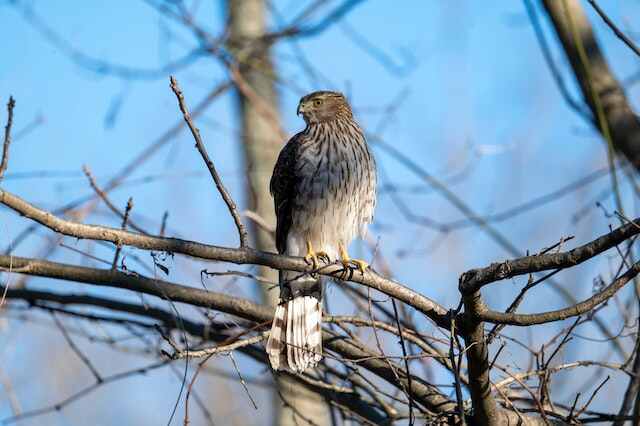
Conclusion
In conclusion, the relationship between hawks and cardinals is complex and influenced by various factors.
While hawks are known to prey on birds, including cardinals, not all hawk species exhibit the same level of predation on cardinals.
The selection of prey by hawks is influenced by several factors, including prey size, behavior, and habitat.
Cardinals have developed adaptations to avoid predation, such as their bright plumage, which serves as a warning to predators.
The relationship between hawks and cardinals is a delicate balance, which can be disrupted by human activities such as habitat destruction and the use of pesticides.
Therefore, it is important to promote coexistence between these two species by implementing measures such as creating habitat diversity and reducing pesticide use.
In this way, we can create a harmonious environment where hawks and cardinals can thrive and contribute to the biodiversity of our ecosystem.
In essence, the relationship between hawks and cardinals can be likened to a dance between two partners, where each partner must play their role to create a beautiful and synchronized performance.

